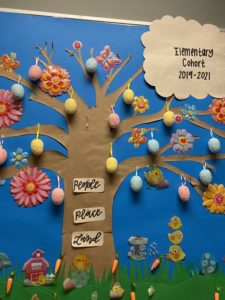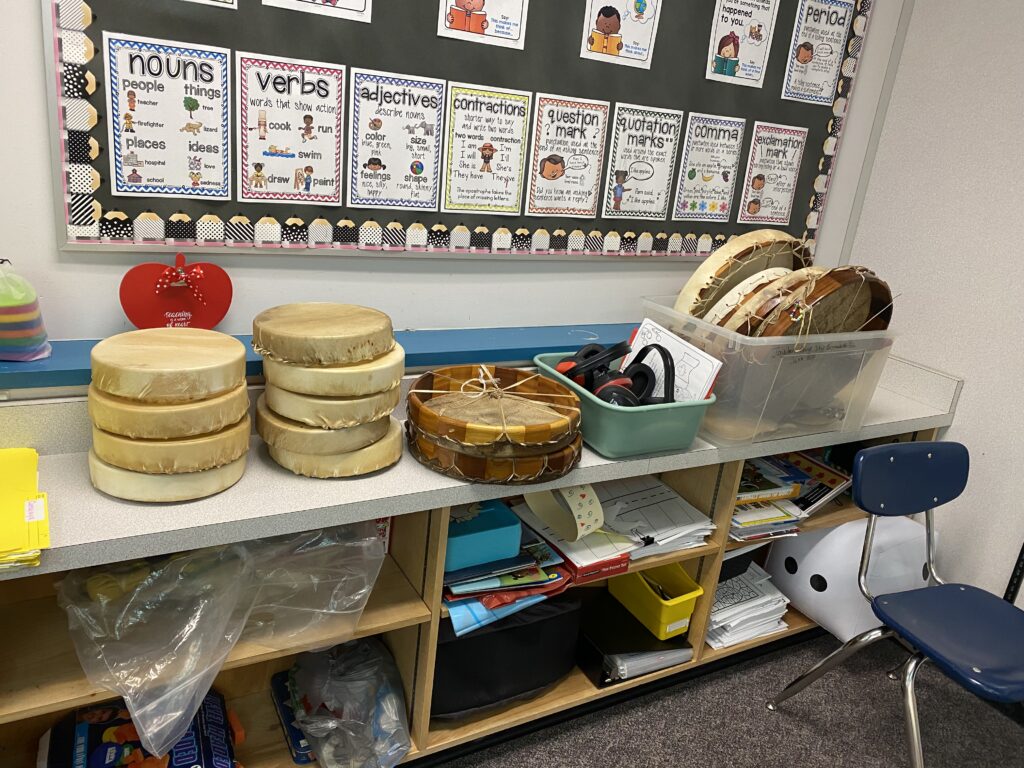Educators respect and value the history of First Nations, Inuit and Metis in Canada and the impact of the past on present and the future. Educators contribute towards truth, reconciliation and healing. Educators foster a deeper understanding of ways of knowing and being, histories, and cultures of First Nations, Inuit and Metis.
Through Standard 9, educators commit to:
- respecting and valuing Indigenous peoples, including the roles they have, and continue to bring in our modern world
- bringing an understanding of how all people are connected to family, community, people, land, and places
- bringing a deeper understanding of the importance of truth, reconciliation, and healing
- providing learning environments that are conducive to learning about Indigenous perspectives, history, culture, and traditions
- applying aspects of place-based teaching strategies and storytelling in their routine teaching practices

THE WHAT
In all of my lessons, I embedded the First Peoples Principles of Learning (FPPL) where all students were given the opportunity to share and explore their own stories, things, places, events, and experiences that happen in their everyday lives through learning about their identity, and how identity connects us to our history, our culture, and our traditions. Students connected and collaborated across cultures which broadens our understanding of ourselves and those around us. Students were always given the opportunity to reflect and think about what was going on with them and the world around them.
In all of my lessons, I incorporated land as a place of comfort, a place of constant belonging, and a way of life. For Indigenous communities, the land and the natural world are closely interconnected within a bond that shapes their identity. This allows them to live in balance and in harmony with nature, a special relationship that far exceeds having a relationship with materialistic things. That relationship with the land is sacred and highly respected; something not to be interfered with. Respecting our land ensures there is a focus on connections with ourselves, our families, our communities, and the natural world. Such connections allow for a deeper understanding and importance of truth, reconciliation, and healing.
SO WHAT
Respecting our land includes respect for what lives on our land. Plants and animals are important resources for Indigenous ways of life.
In this practicum, I have used the book series, “From the Mountains to the Sea” which has been excellent in giving students information about our land through information about our communities, our seasons, and our rivers. In “We Live Here”, students learned about the many things that live near rivers. Students met the cedar, the salmon, the bear, the eagle, and the orca. This lesson focused on placed-based learning. There are 2 major rivers in our community. Prince George’s local Dakelh Indigenous band is known as Lheidli T’enneh poeples. The band lived at the junction of the Fraser and Nechako Canadian rivers. Lheidli means “where the two rivers meet” and T’enneh means “the People.” These rivers are important in our land:
- Cedar trees live and grow all the way along a river, from the mountains to the sea.
- Salmon spend their adult lives out in the open sea. When it is time to lay their eggs, they swim back to their home streams. Their home streams are sometimes very close to the mountains.
- Bears walk long distances to find their food. They live from the mountains to the sea. In the fall they go to the rivers to fish for salmon.
- Eagles fly over large areas looking for food. They live from the mountains to the sea. In the fall, they go to the rivers to feast on salmon.
- Orcas live in the open sea. They swim long distances to hunt for food. Some orcas eat salmon.
Through the cultural practice of a Talking Circle and a Talking Stick, students shared their stories and experiences with trees (cedar tree), salmon, bears, eagles, and orcas and what each of these things teaches us in our everyday lives and how it has meaning to them.

NOW WHAT
As a teacher, I will always strive to:
- take every opportunity to embed history and story in my lessons, focusing on one’s identity. We are all unique, we are all different and special in our own ways
- embed the First Peoples Principles of Learning (FPPL) is that learning involves patience and time and where all students are given the opportunity to share and explore their own story, things, places, events, and experiences that happen in their everyday lives through learning about their identity, and how this connects them to themselves, their families and their communities
- ensure that my teaching is appropriate to my classroom community, students and land
- ensure I bring resident elders and people from the community to teach and enhance some lessons
- embed place, land and experiential learning outside the classroom walls
- always respectfully acknowledge the land of where I am living, learning, teaching and playing
- find authentic resources to teach the indigenous culture appropriately, reaching out to find resources that fit and align with my student’s heritage, self and interests


